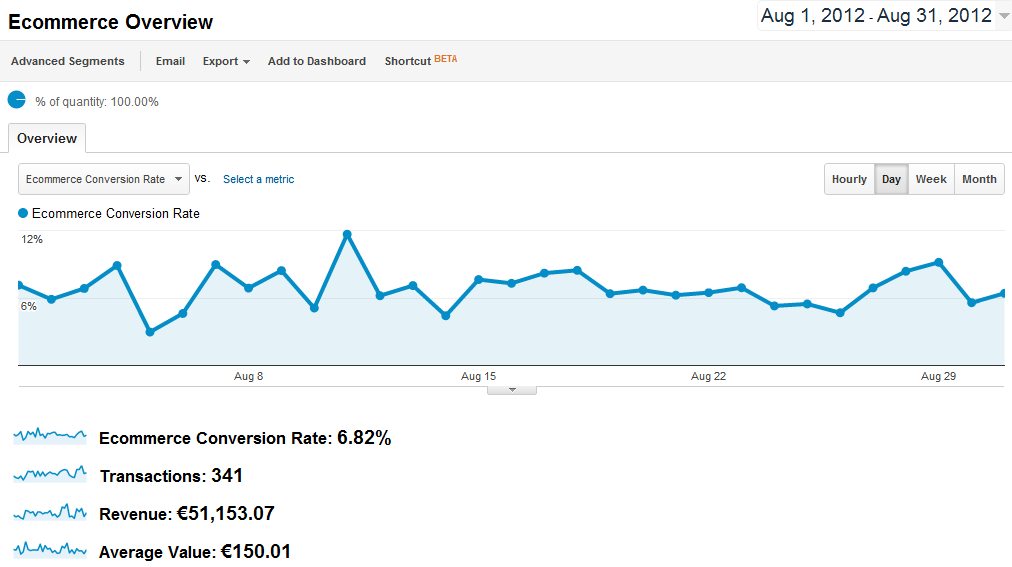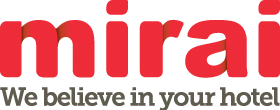Among all new terms presented in Web analytics, there is one that nowadays we have introduced into our slang: Conversion rate. It is one of the principal rates of success in this field, so it is easy to assume that appears as a standard concept that doesn’t allow any kind of subjective interpretation… But be careful, nothing further from the truth. It is an elusive term that can be used as a weapon of manipulation.
As hotelier you don’t need to know the wide amount of terms used in ecommerce, but yet you do need to master this one.
What is it?
Conversion rate is somehow a rate of success measured in percents. Is the number of coversions (transactions) divided by the number of possible tries. It is a term with wide significance and always should be well specified:
- Conversion (transaction): Is a successful action: A subscription, a sell (bookings in a hotel). It doesn’t matter if the amount is 20€ or 1000€, if it’s for 8 or for 1 person etc.
- Tries (visit/user): In e-commerce world it is commonly the number of people who had the possibility to book (visitors, visited the hotel website). If the web had 100 visits and 6 bookings, conversion rate is 6%. It is about one person who enters the website and navigates until closing (or 30 minutes of inactivity). That visit is tracked as one, even if the user is viewing just home page ( for 28 minutes) or all subpages ( in 5 minutes). It’s limited by accuracy of website measuring systems (such as Google Analytics), assuming up to 8% of error.
Applied to hotels: 2 usual actions
1. The most common use of conversion rate: it shows how well a website converts user visits into bookings.
Website conversion rate = Booking / visits
If 100 visits make 6 bookings, the rate is 6%
On the below image we can see the example of a certain hotel. To access conversion data log into Google Analytics (link) and open Conversions > E-commerce > Overview report, choosing date of interest.

In this example we can interpret that in August 6,8% of the website visitors made a booking. They opened the website, probably navigated some pages, entered booking engine and decided to book online.
The rest of visitors either didn’t finish the booking process or just checked prices or event haven´t entered the booking engine. What they did was just open the website.
First point is about the conversion rate of the whole website: Influenced by design, usability, content and functionality of the booking engine.
2. The second measure is a booking engine (motor) conversion rate: This is only based on the entrances into booking engine that means checks of availability and prices. We forget about website visitors.
Booking engine conversion rate = number of bookings / number of availability (price) checks.
When discussing about conversion rate it is important to distinguish between these two measures and to take into account all the variables to interpret data correctly.
Different data, different interpretations
Hotel data can be mixed into various conversion rates to show either high or low value for the same web and booking engine (perfect commercial tool presenting certain product).
Assuming there are 80 people who made 100 visits (some of them visited the web several occasions). They visited the booking engine 40 times, checking dispo 120 times in total (looking for price or room configuration). They made 10 bookings, assuming 50 room-nights in total.
| Real people* | 80 |
| User Visits | 100 |
| Booking Engine visits | 40 |
| Dispo (price) checks | 120 |
| Bookings | 10 |
| Room nights booked | 50 |
*in web analytics it is difficult to measure real people , that is why they use the concept of user visit (described earlier).
Conversion rate depending on variables used at he example:
Website:
→ 10% (booking / visits =10/100)
→12.50% (bookings / real people = 10 / 80) [theoretical for the described reason*]
Booking engine:
→8,3% (bookings / disponibility checks = 10 / 120)
→25% (bookings/booking engine visits = 10 / 40)
Magic! All of them are correct according to general calculation booking/tries but without definitions can lead to different conclusions…
Website conversion rate is a well established measure (used in Google Analytics), there is low probability of misunderstanding. But be careful with booking engine rates, because the variables used in different companies are much more influenced by context and other variables.
Increasing rate and visits to increase bookings?
Conversion rate data should be used to see the trends in time. It is the best measure to value changes. In a year scale it enables to see when people are most probable to book and prepare special actions for worse periods.
For ecommerce there are 2 main factors to analyze our sales: number of visits and conversion rate. (Increasing both can multiply sales):
Bookings = Visits x Conversion rate
Raising the number of visits is probably off-site work related to promotion and marketing campaigns (Hotel popularity and presence).
Raising conversion rate depends on many internal factors of the hotel and website: price balance, offers, promocodes, reviews, unsatisfied guests, intermediaries price cheats, social media activity etc.
Hotel website should contain useful information, be attractive and usable, booking engine easy and functional.
Therefore, is possible to grow conversion rates by improving online and offline factors. It is a hard work to do but can bring lot of benefits if there is a well management effort.
Is my conversion rate low or high?
The conversion rate of a hotel website can change very often. Between 0,5% and 5%, even higher figures in some periods or special cases. In general, the higher conversion rate the better but common sense must be applied, taking into account the following observations:
- Hotels of higher category tend to have a lower conversion rate than lower category/price hotels. Is not necessary negative as they would have higher conversion value (higher prices)
- Holiday/beach resorts usually have also lower conversion, but again is compensated by longer stays or more occupancy that highers the value per booking.
- Hotels with more generic / popular names could have lower conversion as they receive more visits (from still undecided people, or that were looking for a hotel with same name
- Chain hotels website could have different conversion rates (bookings in several hotels at the same website)
- Hotels with high marketing budget focused on getting quality traffic (by using specific services like Adwords) will have higher conversion rates
- However some marketing actions may have lower conversion rate just because they bring a lot of traffic (one user is a lot cheaper) – for example e-mail campaigns, social actions or group-offers. They check for the hotel online, but use other platforms to make the booking.
- Having better offers/prices on intermediary websites can destroy your website conversion. Hotel looses sales on his website despite the user has visited the hotel website online.
- Quantity of non-reimbursable fares that you sell also influence the conversion: It will get lower (only decided users will make a booking) but also will low your cancelations rate.
- Be aware of the cancellation percent. The variable that measures “bookings” doesn’t take into account that sometimes it ends on cancellation ( this happends with Google Analytics).So if your hotel has more cancellations than others, the conversion rate will not indicates that you will have worse results than your competitor.
- If a booking engine has few form fields in a visible place will have more visits, therefore less teorethical conversion. However if the engine requires more information, or is more hidden only will receive enters of users that are really interested to book: the conversion rate will be higher.
- When the booking engine allows to make multiple room reservations (this is positive for hotel results) the hotel will have a low conversion as the user only makes 1 conversion (booking). But if the engine permits to do the process for 2 rooms, the conversion rate will be doubled.
- The engine that allows changes on a booking, will lower the conversion rate. But this is positive because like this we can avoid bookings made only as the substitution to the cancelled ones.
Be careful when comparing conversion rate between different booking engine

The best way to analyse and measure conversion rate
Do not compare different hotels’ conversion rates without specific details. What if my rate is 2% and my competitors 1%, am I twice better than him? Not necessary. For example, if my hotel has very few visits but of high quality, my rate could be high but this is not necessary positive.
As mentioned before, is more useful comparing rates within time, its evolution as a consequence of certain actions: before/after lauching a campaign, offers, low/high prices etc. Creating new actions orientated to capture new clients when we know they are more tending to book.
The only valid way to compare the conversion rate between 2 different booking engines is to run an A/B test. It means that at the same website, of the same content and desing and the same period, we place 2 different booking engines and show them randomly, each to 50% of visitors. This way is more reliable than placing the engine A in a period and B next period of time.



